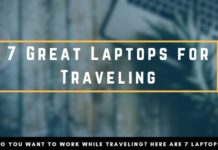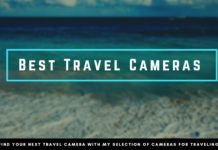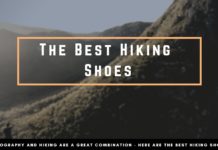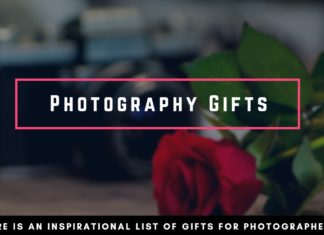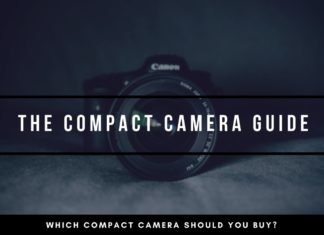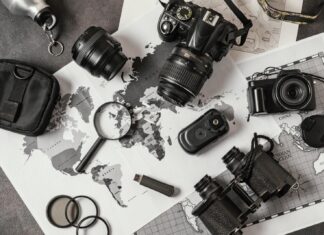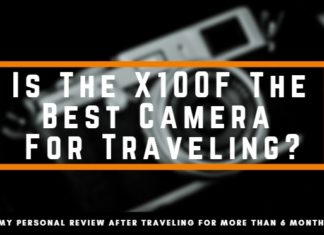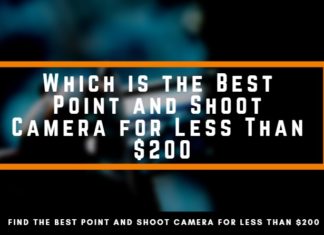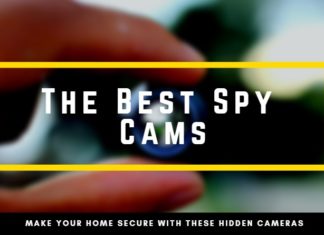I promised in the latest blog post where I revealed my travel plans to give an extensive overview of the gear that I believe is essential for a successful photography travel. My goal is to have a very light travel photography gear and reduce the weight to a bare minimum. As a Street Photographer, I want to be mobile while being able to produce images of the highest quality. Instead of taking a big DSLR with a plethora of changeable lenses I prefer to use small compact cameras. Maybe you are afraid that you will miss some of the shots, but there isn’t really a reason to switch gear just for a vacation. What works at home should also be a part of your travel photography gear.
Nonetheless, if you are on the hunt for a new long-term investment in a new camera or simply want to acquire a backup camera, The Fuji X100F or the RicohGR could be your new favorites. Making money off of Street Photography is very difficult, therefore all of these investments come from my regular day job.
The Best Travel Photography Gear
Organizing a trip is already a lot of work and to save you of some of it, here is my list of travel photography gear that is in my backpack and suitable for international travels. It is optimized to fit in the hand luggage, so you don’t need to be afraid to leave all your travel photography gear in the responsibility of the airline. Another advantage is, that you can take it always with you and don’t need it to abandon in the hotel room or apartment.
1Fujifilm X100F

Type | Mirrorless Camera with Fixed Lens |
Megapixels | 24,3 |
Sensor Format | APS-C |
Viewfinder | Hybrid / LCD-Screen |
Lens | 35mm eq. |
Weight | 469g |
Price | ~ $1300 |
Amazon | Get The Fuji X100F |
The Fuji X100F is still my favorite camera for Street Photography. It is small, conceivable and delivers great quality images. You don’t appear like a professional paparazzi, but like a typical tourist due to its retro design.
Featuring a 35mm full-frame equivalent lens, you are very versatile in your choice of motives. Portraits are possible and not as heavily distorted like anything below 35mm.
This focal length is also close to our natural field of view. Although offering the luxury of an electronic viewfinder as well as an optical viewfinder, you are very fast accustomed to the framing of the Fuji X100F.
In my opinion, it is the ideal travel camera and therefore part of my travel photography gear list. It is light-weight, you can take it everywhere and walk with it the whole day without getting tired of it.
The fixed lens is an advantage for me on my travel since this design is less prone to get dirty and can also be used to do Street Photography at night, which is great when you want to explore the Bluefire near Ijen for example.
2RicohGr

Type | Mirrorless Compact Camera |
Megapixels | 16,2 |
Sensor Format | APS-C |
Viewfinder | LCD-Screen only |
Lens | 28mm eq. (non-zoom) |
Weight | 248g |
Price | ~ $600 |
Amazon | Check The RicohGR II |
As the little brother of the Fuji X100F my RicohGr is the smaller backup version when I need something even smaller or want to have a wider field of view with the 28mm full-frame equivalent focal length. In my opinion, the RicohGR II is one of the best cameras for hiking as well.
With its 16 Megapixel the RicohGr, though fitting in my hand, creates pictures of professional quality.
This camera is part of my travel photography gear because it is more suitable for crowded places where the Fuji might be too bulky.
Another advantage is that the RicohGr can withstand a lot. I went through monsoon-like rain and it still works like a charm. Being less expensive a damage is more bearable than breaking the Fuji right away.
I used the cameras already prior my vacation and decided against investing in new equipment. In my opinion, those two cameras are the ideal travel combination and I am already used to them.
3Photography Backpack

In contrast to the cameras, I had only a small backpack that I use in my city. Space is limited to two cameras a flash and a couple of batteries, though it gets quite messy in this cramped room.
For my travel photography gear, I wanted a backpack that is more organized and offers enough room for all my electronic devices. Therefore something new had to be found.
My first choice was the Flipside AW 400II as it has a lot of room and could store a 15″ notebook. Unfortunately, the spacious interior comes with the downside of possibly not being able to take it on the plane as hand luggage.
For this case, the Lowepro Pro Tactic 350 seems to be the better choice. Although a little smaller, it still can store all the equipment mentioned in this post.
On the other hand, it is also more suitable to take with me the whole day through the city, which could have been a little worrisome with the bigger Flipside.
The Pro Tactic 350 is weather sealed, which is convenient in a quickly shifting rain season in South East Asia.
4Camera Batteries

Mirrorless cameras can suck up a lot of battery power in no time. To never face the problem of being powerless on the trip I have an arsenal of reserve batteries.
From my own experience batteries from third-party manufacturer work better while being less expensive.
When I got my RicohGr I also ordered a few backup batteries and used them along the provided original batteries. The original batteries were damaged and non-functional only a few days later.
Since then, I only chose to order alternative batteries and they work like a charm. Only costing one-third of the original price, replacing them isn’t a huge investment, although so far they are enduring the work-load very well.
For the Fuji X100F, I went with Patona batteries and chargers. They are chargeable via micro-USB, USB or the usual power cord.
Due to its differences in size, the batteries of the X100F & Ricoh GR aren’t compatible.
Therefore I ordered Cellonic batteries for the RicohGr. They are only chargeable through the camera while connected via USB.
5Flash

In my photography work, I like to express myself with flash Street Photography a lot. Not only at night, but also during the day the flash is my steady companion. The flash helps me to highlight certain areas and steer the attention of the viewer in a certain direction. Or I simply want to be more creative and create great effects with the flash.
Either way, I couldn’t imagine traveling without my flash.
My choice has been the Yongnuo YN560-III ever since I started with a flash in Street Photography.
It is relatively light and easy to handle. I use it as an off-camera flash so I don’t need metering through the lens anyway, but use it manually.
The 4 batteries last for a few days of intensive shooting.
More important than the actual flash I found to be the trigger and remote to be.
There was nothing more frustrating to lose the connection with my cheap flash triggers. Now I am using the Yongnuo YN-622 as triggers and the Yongnuo YN-622N-TX i-TTL as the controller which work with both, the Fuji X100F and the RicohGr. Accidentally I also dropped them before, leaving some marks, but still working, so I hope they will do me a favor when I am shooting in rougher conditions in Indonesia.
The new combination is way more reliable and a lot more fun on the street.
6Rechargeable Batteries

Since the flash uses up a lot of power I want to have a lot of reserve batteries, similar to my cameras.
Rechargeable batteries are great for me to not worry about finding a store in case my batteries run out of power.
In more remote places you would also have to pile up on disposable batteries, just to be on the save side.
With rechargeable batteries, you travel lighter and more minimal.
I went with some basic gear as I don’t believe there is much difference in the products.
7Power Adapter

When traveling abroad, keep in mind that there might be different standards that render the plug-ins incompatible to your electronic devices.
In such cases, you could either buy an adapter for your electronic gear in every country you are in or just go with a power adapter that is compatible with almost every plug-in used.
Such adapters are particularly useful when you combine them with a plug strip from home. So you only need one adapter for the strip to connect multiple devices.
I went with the adapter from Naruba which features a modularized design to match foreign plug-in standards and also comes in a very small & handy case.
8SD-Cards

How to backup your photo data is already an important topic when working from your usual space. Data loss is a real danger and can lose you years of work on the streets.
You should always have multiple “storage areas” and not rely on one system. Backups are easier when you are at home and have a steady internet connection allowing you to use a relatively save cloud storage.
When traveling there are multiple options. I chose to use SD-Cards for my most valuable pictures, the notebook for the complete collection and cloud storage to store my Jpegs in places where I have a steady Internet connection.
One focus for my choice of SD-Cards was that they are fast, as I plan to backup a lot of data and don’t want to spend too much time having the notebook blocked by the data transfer.
SanDisk is a reputable manufacturer and the 32GB should be enough to store all the RAWs that already passed the first round of filtered images. Of course, for the relatively cheap price, it doesn’t hurt to buy more than one card.
Together with the SD-Cards I also ordered a card reader, because my notebook doesn’t have the needed slots. The SD-card reader is connected via USB and is able to read different card sizes.
9Powerbank

Energy is an important topic throughout the items I put on my photography travel photography gear list.
Not only for the vacation, but also for the flight itself, a power bank can serve as an energy source. Since a lot of flights don’t offer separate outlets, a power bank can deliver the power until you hit the ground.
Also, you are more flexible and able to work independently from other power sources.
Be aware of regulations that don’t allow power banks in your flight luggage. In your hand luggage power banks until a capacity of 100mWh are normally allowed, but depending on the airline you are not allowed to use it in-flight.
10Notebook

During my stay in South-East Asia, I also want to be able to work from there. Not only do I want to write articles, but also edit & post-process my photographs. A notebook is my preferred choice of a workstation.
An iPad or similar tablets aren’t very comfortable for me to work longer hours on and I feel that my productivity is a lot less.
For my travel photography gear, I went with an Asus Zenbook as a lightweight powerhouse. It has a normal graphics card, 512 GB SDD Storage, and 12 GB which should handle my photo collection very smoothly.
The Asus Zenbook presented above has a 13″ screen and fits perfectly in the travel backpack. Anything bigger wouldn’t fit in the hand luggage.
11Headphones

During a long flight and travel, I don’t want to miss at least some form of entertainment. Bluetooth headphones are great for the occasion and don’t interfere with the hand luggage, as they don’t require any wire connection.
There a lot of expensive Bluetooth headphones that I found would be uncomfortable when wearing for a long time or were very noisy. But the TaoTronics really fit well and they became part of my travel photography gear.
Good headphones don’t need to be expensive and my favorite ones are the TaoTronics.
They run for a good 15 hours in Bluetooth mode while having a good sound quality and over-ear “cushioning”.

















